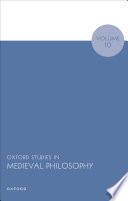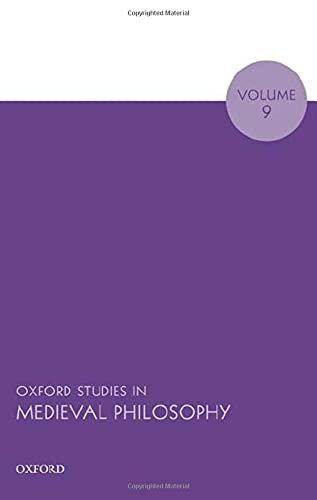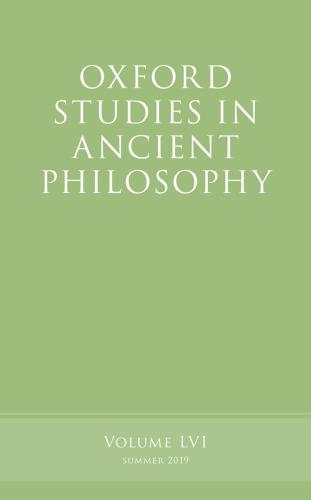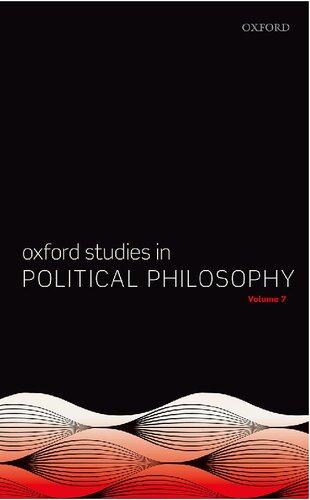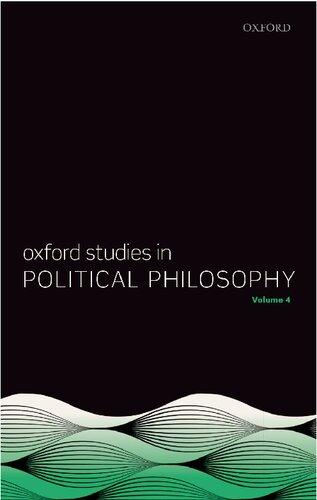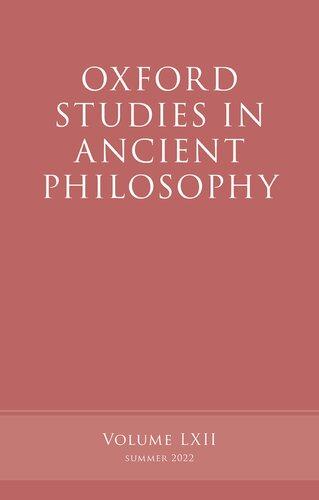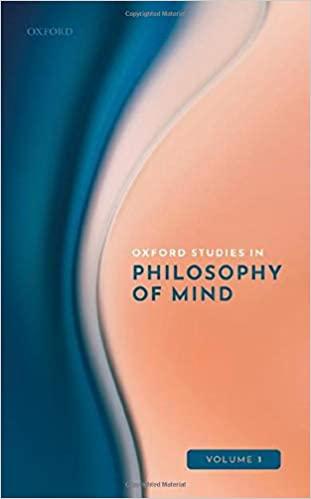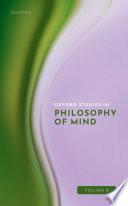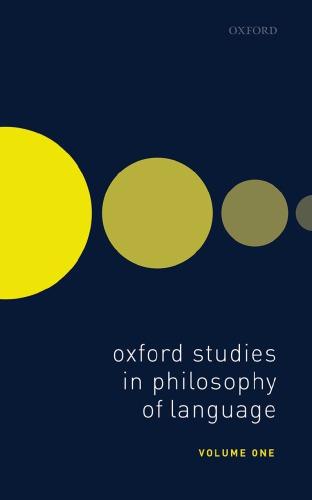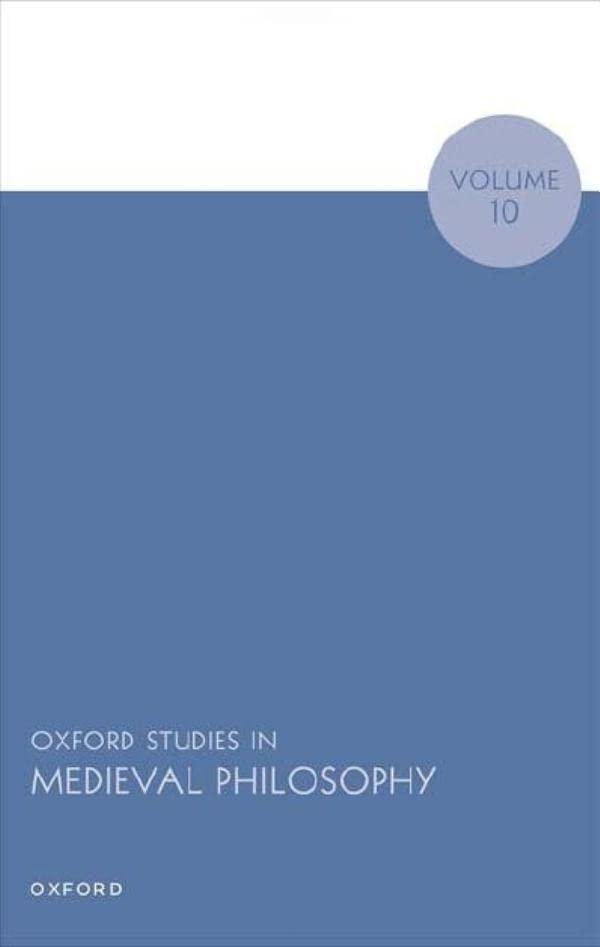“Lewd,Feeble,andFrail”
HumilityFormulae,Medieval Women,andAuthority
ChristinaVanDyke
Thehumilitytopos initsmostbasicform,arhetoricalstrategyusedto positionaspeakerandtheirprojectrespectfullyinrelationtotheir audience appearsinawidevarietyofphilosophicalliterature. Socrates,forinstance,beginsthe Apology byclaimingthatheneedsto defendhimselfinhisusual “rough” mannerbecauseheisignorantofthe polishedrhetoricofthelawcourt,whilethededicatoryletterof Descartes’ s Meditations contraststheSorbonne’sposition(“noinstitutioncarriesmoreweightthanyoursinmattersoffaith;whileasregards humanphilosophy,youarethoughtofassecondtonone”)with Descartes’ sown: “whenIremembernotonlythatIamahumanbeing, butaboveallthatIamanignorantone,Icannotclaimthat[thiswork]is freeofmistakes” (CSMII:5).Theuseofhumilitytopoiisparticularly commonincontemplativephilosophy,withitsemphasisonselfexaminationandmoralandspiritualdevelopment.AsJulianof Norwichwritesinher Revelations: “Godforbidthatyoushouldsayor takeitsothatIamateacher,forIdon’tmeanthatnorhaveInever meantthat;forIamawoman,lewd[uneducated],feeble,andfrail.”¹Yet whilephilosopherstypicallyreadSocrates’sclaimasironicand Descartes’sasdisingenuous flattery,evenscholarsofmedieval
¹ShortText,section6,myrenderingintomodernEnglishfromthetextin TheWritingsof JulianofNorwich:AVisionShowedtoaDevoutWomanandARevelationofLove,ed.N.Watson andJ.Jenkins(UniversityPark,PA:PennsylvaniaStateUniversityPress,2006),75.
ChristinaVanDyke, “Lewd,Feeble,andFrail”:HumilityFormulae,MedievalWomen,andAuthority In: OxfordStudies inMedievalPhilosophyVolume10.Editedby:RobertPasnau,OxfordUniversityPress.©ChristinaVanDyke2022. DOI:10.1093/oso/9780192871244.003.0001
philosophytendtoacceptclaimslikeJulian’ s thatis,claimsby medievalwomen atfacevalue.WhenHildegardofBingenwritesin her Scivias,forinstance,thatsheis “timidinspeaking,andsimplein expounding,anduntaughtinwriting,” wetakethisasasadtestamentto medievalwomen’srelativelackofeducationandscholarlyacumen.We ignore(orareignorantof)thefactthatthe “timidinspeaking” Hildegard conductednofewerthanfourmajorpreachingtoursthroughout Germany,thatthewomanwhoclaimstobe “simpleinexpounding” wroteanextensivediscussionontheprologuetothebookofJohn(inthe LiberDivinorumOperum),andthatthe “untaughtinwriting” Hildegard composedthreemajorworksinphilosophicaltheologyandtwomedical textbooks,inadditiontohernumerouschoralworks(manyofwhichare stillperformedtoday).²
Theprimarygoalofthispaperisverysimple.Itistoprovide “ one weirdtrick” forreadingmedievalChristianwomen’suseofhumility topoi,sothatcontemporaryscholarsofmedievalphilosophycanappreciatehowthesewomenusethemnottoexpresslackofeducation,selfloathing,and/orinternalizedmisogynybutrathertoestablishthemselves asauthoritieswithinexistingdiscourses.Insodoing,Ihopetoremove oneofthemainobstaclesthatcontinuestoblocktheintegrationof women ’sworksintodiscussionsofmedievalphilosophy:theimpression thattheseself-professed “unlettered” womenlackedintellectualsophisticationanddidnotconsciouslyengagethephilosophicalandtheological debatesoftheirday.
Tothatend,therestofthispaperproceedsasfollows.First,Iexplain howhumilitytopoigenerallyfunctionintheMiddleAges,showingthat theirusewasubiquitousincontemplativeliteraturebybothmaleand
²Hildegard’sdownplayingofhereducationhasotherfunctionsaswell.In “Hildegardand HerHagiographers:TheRemakingofFemaleSainthood” (in GenderedVoices:MedievalSaints andTheirInterpreters,ed.C.Mooney(Philadelphia:UniversityofPennsylvaniaPress,1999)), BarbaraNewmansuggeststhatanotherreasonHildegarddoesthisis “inordertoauthenticate herpropheticcall.” Newmanimmediatelygoeson,however,toobserve: “[Yet]arecently discoveredvitaofherteacherJuttaofSponheim(d.1136),commissionedbyHildegardand possiblywrittenbyVolmar[themonkwhowasmeanttowriteHildegard’sownvitauntilshe outlivedhim],describesthearistocraticrecluseasliterate,intelligent,andaskillfulteacher;it characterizesherrepeatedlyasa magistra,hernunsas discipulae,andtheirmonasteryasa schola” (197,fn.18).Inotherwords,Hildegarddid,infact,receiveaformaleducationonthe modelofthe schola
femaleauthors,andthatsuchstatementsofteninclude(1)anexplanation ofthetext’slargerpurposeand(2)adefenseoftheauthor’sclaimto writeit.Second,Iaddressthecentralityofhumilityasavirtueinthe LatinChristiancontemplativetradition,forinordertounderstandhow humilityformulaewouldhavebeenreadinthisperiod,weneedto appreciatehowhumilityisheldupasnotjust an idealbut the moral idealforlayfolkaswellasmembersofreligiousorders.Finally,Iaddress medievalwomen’sparticularuseofhumilitytopoiinlightofthisbroader context,whichallowsustoseehowwomenwritersinthisperiodoften usetheseformulaeto “front” objectionstotheirrighttowriteonthese subjects,andthentoexplicitlyaddressthoseobjectionsinthevoiceof theonlyuniversallyrecognizedmedievalauthority:God.
1.MedievalHumilityTopoiasRhetoricalTrope
“Cananythingbereclaimedfromtheself-denigratingrhetoricofmedievalwomenintheChristiantradition?” asksMichelleVossRoberts.³ Althoughshegoesontoanswerinaqualifiedaffirmative,VossRobertsis hardlyaloneincharacterizingthemedievaluseofself-descriptorslike “ignorant” and “filthypuddle” asaparticularlyfeminineproblem;⁴ she goesontostatethat, “Duetothefrequencyofsuchstatementsin medievalEuropeanwomen’swriting,scholarshavebestowedupon themthestatusofatrope,thehumilitytopos.”⁵ Yettheuseofthe humilitytoposishardlyuniquetomedievalwomen itappears throughoutcontemplativeanddevotionalliteratureinthemedieval LatinChristiantradition,crossinggeographicregions,religiousorders, andgender.WhenClareofAssisicallsherselfa “uselessandunworthy servant” inalettertoAgnesofPrague,forinstance,sheisdirectly
³ “RetrievingHumility:Rhetoric,Authority,andDivinizationinMechthildofMagdeburg,” FeministTheology 18(2009),50–73,at50.
⁴ SeealsoGraceJantzen, Power,Gender,andChristianMysticism (Cambridge:Cambridge UniversityPress,1995);SarahCoakley, PowersandSubmissions:Spirituality,Philosophy,and Gender (Oxford:Blackwell,2002);andLoganDaleGreene, TheDiscourseofHysteria:TheTopoi ofHumility,Physicality,andAuthorityinWomen’sRhetoric (NewYork:EdwinMellenPress, 2009).
⁵“RetrievingHumility,” 51.
quotingthefounderofherorder,FrancisofAssisi,whorefersto himselfas “auselessmanandunworthycreature” inaletterwrittento hisentireorder.⁶
Thereareatleastthreereasonswhyhumilityformulaebecome especiallycommonintheRome-basedChristiantradition.First,once prideislabeledthe “deadliest” ofthe “deadlysins” identifiedbyGregory theGreatinthesixthcentury(andpopularlyportrayedastherootofthe othervicesinmoralityplays,literature,andart),pride’sconverse,humility,isinturnupheldasnotjust a butrather the moralidealfromwhich spiritualprogressbeginsandinwhichitculminates,andrepresentedas themotherorrootofthevirtues.⁷ Second,becausemedievalcontemplativeliteraturehasasitsprimarygoalmoralandspiritualdevelopmentin theformofincreaseddevotionandclosenesstoGod,theauthorsofsuch literatureremainformallyconsciousoftheirstatusascreaturesinrelationtoCreatorregardlessofwhethertheyareaddressingGod(asin Anselm’ s Proslogion andCatherineofSiena’ s Dialogue)orfellowcreatures(asinMarguerited’Oingt’ s Mirror andtheanonymous Cloudof Unknowing).⁸ Finally,languagedescribinghumanbeingsasservantsof GodpermeatesScriptureandformsoneofthecentralmodelsforrelating toGodintheMiddleAges;David’sandPaul’sconfessionsofweakness andhumbleservanthoodinthePsalmsandepistlesareoftencitedin medievaltextsalongsideMary’sdescriptionofherselfasthehandmaidof GodintheMagnificatasexamplesofthismodel.⁹
Medievalhumilityformulaetypicallyincludeprofessionsofunworthiness,lowvaluerelativetoothersaswellasGod,andaninabilityto expressproperlywhatshouldbesaidduetolackofknowledgeand/or education.Theyalsooftencontainpleasforilluminationand/ornote
⁶ CompleteWorks,tr.R.J.ArmstrongandI.Brady(Mahwah,NJ:PaulistPress,1986),195 (Clare)and60(Francis).Itisworthnotingthattheeditorsofthisvolumemissthis,attributing Clare’sphrasingheretoMary’sMagnificatratherthanseeingthatreferenceasmediated throughFrancis.
⁷ CatherineofSienausesthemetaphorofatreetoexplaintheimportanceandeffectsof humilityandthedeadlyeffectsofprideandsininher Dialogue.See,e.g.,chapter10,pp.32–33.
⁸ AsJuliusSchwieteringwrites, “thehumilityformulaisagesturetowardGodevenwhenitis theaudiencethatisaddressed,” in “TheOriginsoftheMedievalHumilityFormula,” PMLA 69 (1954),1279–91,at1283.
⁹ See,forexample,BernardofClairvaux’sSermon30in SermonesinCanticaCanticorum,in PatrologiaeCursusCompletus,vol.183,ed.J.P.Migne(Turnhout:Brepols,1969).
thatanythingofvalueinthefollowingworkshouldbeattributedentirely toGod’sgrace.Althoughexpressionsofhumilityonthepartofthe authorcanappearanywhereincontemplativeliterature,humilitytopoi themselvestypicallyappeartowardtheverybeginning(or,inthecaseof letters,sometimestheveryend)ofthework,andtheyservetheimportantfunctionofsettingoutthetext’smotivationandlargerpurpose,as wellasprovidingajustificationforwhytheprojectisbeingtackledby thisparticularauthor.
Toseehowthistropeworks,Iwantnowtopresenthowitappearsin textscomposedby figuresforwhomlackofearthlyauthoritywasnotan issue:AnselmandBonaventure.Anselm,forinstance,writesthefollowingtowardtheopeningofhis OntheProcessionoftheHolySpirit, composedwhilehewasservingasarchbishopofCanterbury(thatis, theheadoftheRomanCatholicChurchinEngland):
Thereare,tobesure,manywhocouldaccomplishthisbetterthan Ican;butmanypeoplehavelaidthisburdenuponme,andbecauseof whatIowetotheloveoftruth,andforthesakeoftheircharityand devoutwill,Idarenotrefusetheirrequest.Ithereforecalluponthe HolySpirithimselftobegraciousindirectingmetothisend.Andso, havingthishope,onaccountofthelowlinessofmyknowledgeIleave higherthingstothosewhoknowmorethanIdo,andIshallattempt whattheyareaskingmetodo:employingthefaithoftheGreeks,and thethingstheyunwaveringlybelieveandprofess,toprovebyutterly solidargumentswhattheydonotbelieve[viz.thattheHolySpirit proceedsfromtheSonaswellasfromtheFather].¹
Herewe findallthehallmarksofthemedievalhumilitytopos:confession ofunworthiness,lackofrelativevalueincomparisontootherswhocould undertakethetask,disavowalofknowledge,andanappealtoGodfor graceandillumination.Wealso findthereasonAnselmiswritingthe treatiseandadescriptionoftheprojectAnselmisundertaking namely, topresentarationalargumentthatemployspointsofdoctrinetowhich
¹⁰ AllAnselmquotationsarefrom TheCompleteTreatises,translatedbyThomasWilliams (Indianapolis:Hackett,2022).
theGreekChristiansarecommittedtoprovethattheyarewrongabout thenatureoftheTrinity.
Inpart because theyhitallthemarksthatcharacterizehumility formulae,wedon’treadthesewordsasAnselm’sexpressingactualselfdoubtorgenuinelackofknowledge.Rather,wetakeitashispayinghis duestotheconventionsofthegenre(anddoingsowithenough flairto makeonedoubthissincerity it’sabitrich,afterall,toclaimnottohave knowledgeof “higherthings” rightbeforetacklingthemysteryofthe relationbetweenthepersonsoftheTrinity).Hemakesthesamemoves inthe firstchapterof OntheIncarnationoftheWord (wherehecalls himself “atrivialandinconsiderablefellow”),inhiscommendationof CurDeusHomo toPopeUrbanII(inwhichhewrites “AlthoughIama manofverylittleknowledge,theseconsiderationsgivemesuchgreat strengththatIwillendeavortoraisemyselfupjustalittle ...sofaras heavenlygracesees fittograntittome”),andintheprefaceofthe Monologion (whichhedescribeshimselfasunwillingtowrite “becauseof thedifficultyofthetaskandtheweaknessofmyowntalent”).That Anselmdoesnotmeansuchstatementstobetakenliterallyisfurther supportedbyhisbehavior:whensendingthe Monologion toLanfranc, forinstance,AnselmwritesthatifLanfrancdoesnotapproveofit, “then letthecopythatIamsendingtoyounotbereturnedtomeortothe aforementionedbrother;rather,letitbebanishedbyoneoftheelements: buried,sunk,burnedup,orscattered.” Lanfrancdoesnotapproveofthe work,butAnselmpublishesitanyway.
Bonaventure,whopresidedovertheFranciscanorderasMinister Generalforalmosttwodecades,usessimilarformulaeinhiscontemplative(asopposedtoscholastic)worksaswell.¹¹Take,forexample,the beginningofhisvitaofFrancisofAssisi,inwhichBonaventurewrites:
¹¹Humilityformulaearenotcommonlyfoundinthescholasticgenreofdisputedquestions, mostlikelybecausedisputedquestionsdevelopedfromateachingcontext,inwhichdifferent groupsofstudentswereassignedtopresentargumentseither “for” or “against” aparticular propositioninaquestion,whichthemasterinchargeoftheclassthen “settled.” Inthissetting, thepurposeofthediscourseisclear,andwhatismostrelevantisthemaster’sauthority(andthe authoritiesonwhichthemasterdraws Augustine,Avicenna,etc.),asopposedtohishumility. Thatthis,ratherthananyunderlyingdifferenceinattitudetowardshumility,iswhatinfluences theuseofhumilityformulaeisclearfromalookatscholastic figureswhoalsowrotecontemplativeworks,suchasBonaventureandMeisterEckhart.
IfeelthatIamunworthyandunequaltothetaskofwritingthelifeofa mansovenerableandworthyofimitation.Iwouldneverhave attempteditiftheferventdesireofthefriarshadnotarousedme,the unanimousurgingoftheGeneralChapterhadnotinducedme,andthe devotionwhichIamobligedtohavetowardourholyfatherhadnot compelledme.ForwhenIwasaboy,asIstillvividlyrecall,Iwas snatchedfromthejawsofdeathbyhisinvocationandhismerits.Soif Iremainedsilentanddidnotsinghispraises,IfearthatIwouldrightly beaccusedofthecrimeofingratitude.IrecognizethatGodsavedmy lifethroughhim,andIrealizethatIhaveexperiencedhispowerin myveryperson.This,then,ismyprincipalreasonforundertaking thistask,thatImaygathertogethertheaccountsofhisvirtue,his actions,andhiswords likesomanyfragments,partlyforgotten andpartlyscattered althoughIcannotaccomplishthisfully,sothat theymaynotbelostwhenthosewholivedwiththisservantof Goddie.¹²
Hereagainweseeallthehallmarksofthehumilitytopos,includingthe reasonwhyBonaventureinparticulariswritingthistextandthepurpose forhisundertakingthistask(namely,sothatFrancis’svirtue,actions, andwordscancontinuetoinspirefuturegenerations).LikeAnselm, Bonaventureis firmlyestablishedatthetopofhisinstitutionalhierarchy; hisprotestationsofignoranceorlackofworthcannotbetaken,then,as duetointernalizednormsofsubordination otherthantheprevailing normofsubordinationtoGod,whicheveryoneintheLatinChristian traditionacknowledged.(Eventhemostworldlyofpopesinthisperiod refertothemselvesasthe “humbleservants” ofGodinlettersandother documents.)
The finalexampleofthegeneraluseofhumilityformulaeIwantto considercomesfromthe MeditationsontheLifeofChrist,alate thirteenth-centurysetofspiritualexercisesthatbecameoneofthe
¹²TranslationbyEwertCousins,182–83.Bonaventurealsogoesontosayinthissame passagethat “IdecidedthatIshouldavoidacultivatedliterarystyle,sincethereader’sdevotion profitsmorefromsimpleratherthanornateexpression.”
mostwidelyreadpiecesofliteratureinthelaterMiddleAges,particularly amongwomen.Initsprologue,theanonymousauthorstates:
Ididwishyouwouldreceivethisintroductionfromsomeonemore experiencedandlearned,becauseIamquiteinadequateforsuch things.Nevertheless,judgingthatitwouldbebettertosaysomething suitableratherthanremainsilententirely,Ishallputmyinexperience tothetestandspeakonfamiliartermswithyou,inaroughand unrefinedmannerofspeaking:ontheonehandsothatyouareable tounderstandbetterwhatissaid,andontheother,thatyoucanstrive therebytorefreshnotyourearbutyourmind. ...I hopealsothatmy lackofexpertisemightsupplysomethingtoyourlackoferudition;but inthisendeavorIamevenmorehopefulthat,providedyouwishto exertyourselfbyassiduousmeditation,youwillhaveasvirtualteacher thesameLordJesusofwhomwespeak.¹³
Hereweseeanotherclassicuseofthehumilitytoposinawidely circulatedandreadtext.Thisstatementappearsimmediatelyfollowing anexplanationofhowthemeditationsrecommendedinthisworkwill preparetheirpractitionerforcontemplationofGodinitshighestform;it includesthestandarddisavowalsofworth,knowledge,andliterary expertise,andanappealtoilluminationfromGod.
Thisappeal,moreover,invokesthepopularAugustiniantropeofGod astheonlytrueteacher amovethatlevelstheintellectualplaying field aswellasacknowledgesGodastheultimatesourceoftruth.Insofaras Godaloneisresponsibleforgrantinghumanbeingsunderstandingand wisdom,theFranciscannuntowhomthe Meditations waswrittenisin asgoodapositionforreceivingilluminationascardinalsanduniversity masters.Infact,theimportanceofhumilityasavirtueinthelaterMiddle AgesentailsthatGodisseenasperhaps more likelytoilluminatethe “leastofthese.” Tofurtherilluminatetheuseofhumilityformulaeinthis period,then,Iturnnowtoadiscussionofhumilityasmoralideal, modeledbyChristhimself.
¹³ MeditationsontheLifeofChrist,tr.F.X.Taney,AnneMiller,andC.MaryStallings-Taney (Asheville,NC:PegasusPress,2000),3–4.
2.HumilityasContemplativeVirtue
Asmentionedinsection1,afterGregorytheGreat’sdelineationof the “deadlysins” inthesixthcentury,thevirtueofhumilitygains specialemphasisinmonasticcommunitiesastheconverseofpride. AftertheGregorianreformsoftheeleventhcenturyandtheriseofthe universitysysteminthetwelfthandthirteenthcenturies,growingfrustrationwithbothrigidecclesiasticalhierarchiesandintellectualelitism contributestoawidespreadculturalemphasisontheimportanceof humility.Inthemendicantordersandinthelaydevotionalmovements thatspreadlikewildfireinthethirteenthto fifteenthcenturies,humility isupheldasavirtuecentralnotjusttomoralandreligiouslife,butto intellectuallifeaswell:truewisdomisagiftfromGod,andcontemplationofthedivineisinherentlyhumbling.Furthermore,theprimeexemplarofhumilitythroughouttheMiddleAgeswastakentobeChrist himself.AlthoughtheSecondPersonoftheTrinity,Christ “emptied himselfandtookontheformofaservant” viatheIncarnation,presentingamodelofhumilitywithuniversalapplicability ifGodcanbe humble,theneveryoneshouldbehumble:popeorpeasant,bishopor beguine.Thisconceptionofhumilityasmoralidealformsthebackgroundagainstwhichmedievalexpressionsofunworthinessandignorancewereutteredandinterpreted.Suchpronouncementsrepresent comparative ratherthanabsoluteassessmentsofworth,wheretheultimateobjectofanycomparisonisalwaysGod.Becausefallenhumannature tendstowardprideandaninflatedsenseofself-worth,thefunctionof thiscomparisonistoremindbothauthorandreaderthatanyhuman accomplishmentpalestoinsignificancenexttoGod’sinfiniteactuality.
ThepoemwithwhichMargueriteofPoreteopensher MirrorofSimple Souls neatlycaptureshowhumilitywasportrayedasanideal anda cautionagainstpride intheearlyfourteenthcentury.Introducingher treatisetoitsreaders,shewrites:
Humility,whoiskeeperofthetreasuryofKnowledge AndthemotheroftheotherVirtues Mustovertakeyou. [...]
Theologiansandotherclerks, Youwillnothavetheintellectforit, Nomatterhowbrilliantyourabilities, Ifyoudonotproceedhumbly.
(79)
HereMargueritedrawsonhumility’sstatusasboththesourceofthe othervirtuesandapreconditionforwisdom.Theexplicitmentionofthe needforhumilityintheologiansandclerks(whorepresentedthepinnacleofthehierarchyofintelligentsia,andwhowouldburnMargueriteat thestakeasahereticin1310)underscorestheideathatintellectualpride isanobstacletoillumination.
Ihavewritteninmoredetailelsewhereaboutthevitalrolehumility playsinthemedievalChristiancontemplativetradition;¹⁴ forthepurposesofthispaper,whatprovesmostimportantisitsstatusasamoral, epistemic,andspiritualideal,andChrist’smodelingofthatideal. Acentralthemeofthemedievalmeditationgenre,forinstance,isthat theIncarnationhascreatedanunbreakablelinkbetweenhumanityand divinity.¹⁵ AstheEnglishhermitRichardRollewritesinoneofhiswidely readfourteenth-centurymeditationsonthelifeofChrist:
Lordwhocamedownfromheaventoearthforloveofthehumanrace, fromsohightosolow,fromsuchdominiontosuchlowpoverty,from suchhighsplendortosuchlowmisery,fromsuchhighmagnificenceto suchlowsorrow,fromsuchapleasurablelifetosuchapainfuldeath, now,Lordforallthatlovewhichyourevealedtomankindinyour incarnationandinyourpassion,Iimploreyouformercyandhelp.¹⁶
¹⁴ See,forinstance, “‘ManyKnowMuch,butDoNotKnowThemselves’:Self-Knowledge, Humility,andPerfectionintheMedievalAffectiveContemplativeTradition,” inG.Klimaand A.Hall(eds.), ConsciousnessandSelf-KnowledgeinMedievalPhilosophy (NewcastleuponTyne: CambridgeScholarsPublishing,2018),89–106.
¹⁵ Formoreonthemedievalmeditativetradition,andparticularlyitsrelationtotheactivity ofcontemplation,seeMichelleKarnes, Imagination,Meditation,andCognitionintheMiddle Ages (Chicago:UniversityofChicagoPress,2011),andmy “FromMeditationto Contemplation:BroadeningtheBordersofPhilosophyinthe13th–15thCenturies,” in A.GriffioenandM.Backmann(eds.), PluralizingPhilosophy’sPast:NewReflectionsinthe HistoryofPhilosophy (London:PalgraveMacmillan,forthcoming).
¹⁶ TheEnglishWritings,ed.andtr.R.Allen(Mahwah,NJ:PaulistPress,1988),107.
OnereasonChrist’sexampleofhumilityprovessoinformativeforour purposesisthatitrepresentsa perfect modelofhumility:humilityinits purestform,devoidofpretenseorsin.Paradoxically butcrucially Christ’smodelteachesthathumilityisintrinsicallylinkedwithdignity andsublimity.Indeed,acommonScripturaltropethroughoutboththe OldandNewTestamentisthehighbeingbroughtlowandthelowbeing raisedup;thePassionandResurrectionpresenttheultimateexample bothofhowthehighshouldhumblethemselvesandalsoofhowthe humblewillbeliftedhigh.Anynumberofmedievalauthorshighlight Christ’sexampleasbothanimitablemodelofhumilityandanassurance thatsuchhumilitywillresultinacloserunionwithGod.WhenmeditatingonChrist’spresenceintheEucharist,forinstance,FrancisofAssisi writes:
Osublimehumility! Ohumblesublimity!
Look,brothers,atthehumilityofGod Andpouroutyourheartsbeforehim! Humbleyourselves,aswell, ThatyoumaybeexaltedbyHim.¹⁷
Themedievalcalltohumilityisalwaysbalancedwiththisassurance (sometimesimplicit;oftenexplicit)thatGodwillexaltthosewhoanswer thiscall.
Finally,professionsofinsignificanceandlowlinessinthisperiodmust alsobereadinlightofthefactthataccordingtothistradition,unionwith Godisunderstoodtobethe finalendofhumannature thatis,human beingsaremeanttoaimalltheiractionsultimatelyatbecomingonewith theperfectsourceofallgoodness.¹⁸ Obviously,thecontrastbetweenthat perfectsourceandfallenhumannatureisextreme.Regardless,human
¹⁷“ALettertotheEntireOrder,” in TheCompleteWorks,55.
¹⁸ Formoreondifferingconceptionsofwhat,exactly,that finalendmightlooklike,seemy “ThePhenomenologyofImmortality(1200–1400),” inM.Cameron(ed.), TheHistoryofthe PhilosophyofMind,vol.2:PhilosophyofMindintheEarlyandHighMiddleAges (London: Routledge,2019),219–39.
beingswereunderstoodtobecreatedinGod’simagebytheirpossession ofintellectandwill,andwereencouragedtodevelopthosecapacitiesin ordertogrowclosertoGod.Medievalacknowledgementsoftheextentto whichhumanbeingsfallshortofthisgoaldon’tindicateastaticsenseof worthlessness;rather,theyacknowledgetheimportanceofhumilityasa dynamiccomponentofmoralandspiritualgrowth thegroundin whichothervirtuesrootthemselvesandbegintobearfruit.
3.Re-readingMedievalWomen’s
UseofHumilityFormulae
Itisagainst this backgroundthatweneedtoreadmedievalwomen’ suse ofhumilityformulae: first,thecarefuluseofhumilityformulaethroughoutthisperiodasawayofintroducingthetext’scontentandexplaining/ defendingtheclaimofthisparticularauthortowriteit;second,the centralityofhumilityasmoral,intellectual,andspiritualideal,takento applyequallytoall,andintrinsicallylinkedwithdignityanddivinity. Understandingthisbroadercontextallowsustoappreciatehowmany medievalwomenusetheseformulaenotonlytosituatethemselvesas authoritiesbutalsotoexplicitlyrespondtotheobjectionthatwomen havenobusinessspeakingontheologicalandphilosophicaltopics.
We findanearlyuseofthistropeinHrotsvitofGandersheim’sletter tothepatronsofherdramas.Asshewritesinverse:
IdonotdenythatbythegiftoftheCreator’sgraceIamableto graspcertainconceptstheartsconcerning becauseIamacreaturecapableoflearning, butIalsoknowthatthroughmyownpowers,Iknownothing. [...]
Therefore,inordertopreventGod’sgiftinmefromdyingby myneglect,IhavetriedwheneverIcouldprobe, toripsmallpatchesfromPhilosophy’srobe andweavethemintothislittleworkofmine, sothattheworthlessnessofmyownignorancemaybeennobled bytheirinterweavingofthisnoblermaterial’sshine,
andthat,thus,theGiverofmytalentallthemorejustlybe praisedthroughme, themorelimitedthefemaleintellectisbelievedtobe.¹⁹
Here,thelatetenth-centuryBenedictinenunincludesalltheclassic featuresofthemedievalhumilityformula,includinganodtowardthe overtlyBoethiancontentofherdramas(particularlythe Sapientia);the referencetorippingpiecesfromPhilosophy’srobeisadirectreferenceto theopeningbookofBoethius’ s ConsolationofPhilosophy,anditimplies thatHrotsvitseesherselfasaphilosopher.²⁰ Wealsoseeherethemain modificationtothegeneralhumilitytoposthatcharacterizesitsuseby femaleauthors namely,(1)explicitmentionofthesexofthewriter,(2) referencetocommonbeliefsaboutfemaleweakness(inintellectual, physical,moral,andspiritualform),and(3)anassurancethatthese perceivedlimitationsposenobarriertothetext’sabilitytoconveydivine Truth(andmay,infact,enhanceitsabilitytodoso).²¹
IhavealreadyreferencedHildegardofBingen’stwelfth-centuryuseof thehumilityformulaintheintroduction;withthevirtualexplosionof contemplativeliteratureinthethirteenthto fifteenthcenturies,thereare anynumberoflaterexamplestochoosefrom.Tohighlightthebreadth ofthistrope,then,letusconsideritsusebyMechthildofMagdeburg(a GermanbeguinewhowritesinMiddleLowGerman),Marguerite d’Oingt(aFrenchCarthusiannunwhowritesinbothLatinand Franco-Provençal),MechthildofHackeborn(anunatHelftawhose bookiscomposedinLatin),andJulianofNorwich(anEnglishanchorite whowritesinMiddleEnglish).Aswewillsee,despitedifferencesinstyle andemphasis,thegeneralformandfunctionoftheirhumilitytopoi remainremarkablysimilar.
¹⁹ FlorilegiumofHerWorks,ed.andtr.K.Wilson(Cambridge:D.S.Brewer,1998),44.
²⁰ ThisisfurthersupportedbyHrotsvit’ssubsequentclaimthat “Idonotboasttopossess knowledgenordoIpretendnottobeignorant;but,asfarasIamconcerned,theonlything IknowisthatIknownaught” (44) adirectechoofSocrates’scontentioninthe Apology that theonlythingheknowsisthatheknowsnothing,andthisaloneistherespectinwhichhe shouldbeconsideredwisest.
²¹Hrotsvitregularlymentionshersexanditsperceivedlimitationsinherauthor’sprologues ordedicatoryletters,ofteninamannerobviouslymeanttobeironic,aswhensheusescomplex metertoexpressthedifficultyofwritinginversefor “thefragilefemalesex” (19).
LittleisknownofMechthildofMagdeburg’searlylifeoreducation; whatwedoknowisthatshewasabeguine thatis,alaywomanwho dedicatedherselftoalifeofreligiousdevotionandservicewithout enteringaconvent andthatshecomposesthemajorityofherbook, TheFlowingLightoftheGodhead,beforetakingrefugeatthenunneryat Helfta(famousforitsintellectualcommunity)laterinlife.Muchhas beenmadeinrecentdiscussionsabouthowMechthild’sexpressionsof humilityandanxietyconcerninghowherbookwillbereadandreceived shouldbeunderstood;²²MichelleVossRoberts,forinstance,claimsthat Mechthild’sworriesplayan “authorizingfunction” bydintofproviding “constantiterationsoflowlinessthatsubtlypersuadedhermalesupporters” thatsheposesnothreattoestablishedauthority.²³Inlightofthe evidenceIhavepresentedintheprevioustwosectionsofthispaper, however,Ibelievethattheseexpressionsareactuallymeanttoestablish theauthorityoftheirtextsinamuchmorestraightforwardway namely,toexplicitlyaddressthequestionoftheirstatusaswomen writingabouttheologicalandphilosophicalmattersandtoestablish theirrighttospeakauthoritativelyaboutGodandGod’swillfortheir fellowhumanbeings.
Takeforinstance,thismemorablepassageattheoutsetofBookII,in whichMechthildreferstoherselfas “filthyooze” insharingwithGodthe worrythatherbookwillnotbereadorproperlyappreciated:
Ah,Lord,ifIwerealearnedreligiousman, Andifyouhadperformedthisuniquegreatmiracleusinghim, Youwouldreceiveeverlastinghonorforit.
Buthowisonesupposedtobelieve Thatyouhavebuiltagoldenhouseon filthyooze Andreallyliveinitwithyourmother,withallcreatures,and withyourheavenlycourt?
Lord,earthlywisdomwillnotbeableto findyouthere.
²²See,e.g.,SaraPoor, MechthildofMagdeburgandHerBook:GenderandtheMakingof TextualAuthority (Philadelphia:UniversityofPennsylvaniaPress,2004)andVossRoberts, “RetrievingHumility.”
²³ “RetrievingHumility,” 68.
HereMechthildpurposefullycontrastsherstatusandknowledgeasa laywomanwiththatofauniversity-educatedman.Atthesametime,she referstoherbookasnotjusta “uniquegreatmiracle” butalsoa “golden house” inhabitednotjustbyChristbutalsobyMaryandtheheavenly hosts.Nowlookattheresponseshereceivesfromnolesseranauthority thanGod:
Daughter,manyawiseman,becauseofnegligence Onabighighway,haslosthispreciousgold Withwhichhewashopingtogotoafamousschool. Someoneisgoingto findit.
BynatureIhaveactedaccordinglymanyaday. WheneverIbestowedspecialfavors, Ialwayssoughtoutthelowest,mostinsigni ficant,andmost unknownplaceforthem.
Thehighestmountainsonearthcannotreceivetherevelations ofmyfavors
BecausethecourseoftheHolySpirit flowsbynaturedownhill. One findsmanyaprofessorlearnedinscripturewhois actuallyafoolinmyeyes.
AndI’lltellyousomethingelse: Itisagreathonorformewithregardtothem,anditvery muchstrengthensHolyChristianity Thattheunlearnedmouth,aidedbymyHolySpirit,teaches thelearnedtongue.²⁴
ThisassurancethatMechthild’stextisinspiredbytheHolySpirit,that earthlywisdomisoftenfoolishness,andthatwhatshehastosaywill actuallybenefitthoselearnedmenisfurthersupportedbyherappealto themedievalidealofhumilitydiscussedinsection2.Itisthe “leastof these” whoaremostopentoGod’steaching,andwhosework “strengthensHolyChristianity.”
We findanotherexampleofthissortofuseofthehumilitytoposinthe workofMarguerited’Oingt,aCarthusiannunwhoseworks(although
²⁴ TheFlowingLightoftheGodhead,tr.F.Tobin(Mahwah,NJ:PaulistPress,1980),97.
littleknowntoday)werewidelyreadandwellrespectedinbothherown timeandinfollowingcenturies.Towardtheoutsetofher Pageof Meditations,alatethirteenth-centurysetofmeditationsonthelifeof Christ,Margueriteofferswhatat firstlookslikea flurryofjustifications andself-effacinganxiety:
Ibegantothinkaboutandtocontemplatethesweetnessandgoodness whichisinHim,andthegreatgoodHehaddonemeandallof humanity[viahisIncarnation].Iwassofullofthesethoughtsthat Ilostmyappetiteandmysleep.[...]Ithoughtthattheheartsofmen andwomenareso flightythattheycanhardlyeverremaininoneplace, andbecauseofthatI fixedinwritingthethoughtsthatGodhad orderedintomyheartsothatIwouldnotlosethemwhenIremoved themfrommyheart,andsothatIcouldthinkoverthemlittlebylittle wheneverGodwouldgivemeHisgrace.AndforthatreasonIaskall thosewhoreadthistextnottothinkbadly[ofme]becauseIhadthe presumptiontowritethis,sinceyoumustbelievethatIhavenosense orlearningwithwhichIwouldknowhowtotakethesethingsfrommy heart,norcouldIwritethisdownwithoutanyothermodelthanthe graceofGodwhichisworkingwithinme.²
Ifwelookatthispassageagain,however,inlightofthegeneraluseof humilityformulae(notice,forinstance,howMargueriteimmediately makesitclearthatthecontentoftheworkwillbethoughtsonthelife ofChrist),andhumilityasmoralideal,wecanreaditmoreasitwould haveoriginallybeenmeantandunderstood.FirstMarguerite,whois proficientinseverallanguages,obviouslydoesnotlackeither “ senseor learning”;infact,shewritesthesewordsinLatin thelanguageof scholarshipandtheChurch.Second,theCarthusianorder,whichtook strictvowsofsilenceandsolitude,usedtheactofwritingandtranscribingasaspiritualdisciplineandhadasoneoftheircentralspiritual metaphorstheimageofGodinscribingwordsdirectlyintotheir
²⁵ TheWritingsofMargaretofOingt,MedievalPrioressandMystic(d.1310),tr. R.Blumenfeld-Kosinski(Cambridge:D.S.Brewer,1990),26.
hearts.²⁶ Thus,Marguerite’sclaimthatGodorderedthesethoughts “into herheart” andthatsheisinturntranscribingthosethoughtsdirectly fromherheartisextremelysignificant.Third,Margueriteattributesher abilitytocomposethistexttonothinglessthanthemodelofGod’ sown gracemovingwithinher,givingboththeoriginandthemeansofher writingadivinesource.Finally,notethatalthoughsheinitiallyframes thecompositionofthistextintermsofanaidtoherownfuture meditation,sheassumesawiderreadershipinaskingforkindness from “allthosewhoreadthistext.” Takenasawhole,thisstatement actuallypositionswhatMargueriteisabouttosayasanimportant contributiontotheteachingsofherreligiousorder.
Anothermedievalcontemplativewhowasinfluentialinherowntime butremainslittleknowntodayisMechthildofHackeborn,describedby RosalynnVoadenas “oneofthebestknownandmostwidelyread visionariesinlatemedievalandearlymodernEurope.”²⁷ ThecompositionofMechthild’ s BookofSpecialGrace wasacollectiveeffort; althoughMechthildapparentlyregularlysharedhervisionsandrevelationswithherfellownunsatHelfta,sheisdescribedasinitiallyunaware andthenhorrifiedtodiscoverthattheseexperienceswerebeingwritten downandcollectedbysomeofhersisters(includingGertrudethe Great anequallynotablecontemplativeandauthor).Whenshegoes toGodwithherworries,however,Godexplainstoherthat “Truthitself ” isspeakingthroughher:
Iamintheheartsofthosewhodesiretolistentoyou,stirringupthat desireinthem.Iamtheunderstandingintheearsofthosewhohear you;itisthroughmethattheyunderstandwhattheyhear.Iamalsoin themouthsofthosewhospeakofthesethings.AndIaminthe handsofthewritersastheirhelperandcollaboratorineveryway.
²⁶ AsBennettGilbertwrites, “Transcription, fillingthemonk’smindwithtruthfulwords, wasthe firststepina[Carthusian’s]spiritualreflection,” in “EarlyCarthusianScriptand Silence,” CistercianStudiesQuarterly 49(2014),367–97,at372.
²⁷ AsVoadengoesontowrite: “Hundredsofcopiesof[Mechthild’s]bookofrevelations,the Liberspecialisgratiae,wereincirculationinbothcompleteandexcerptedforms,inLatin,and translationsintoatleast fivedifferentvernaculars” (“MechthildofHackeborn,” inA.Minnis andR.Voaden(eds.), MedievalHolyWomenintheChristianTraditionc.1100–c.1500 (Turnhout:Brepols,2010),431–51,at431).
Thus,allthattheycomposeandwriteinandthroughmeistrue,for IamTruthitself.²⁸
AfterbeingassuredthatGodwasinfavorofthebook’scomposition, Mechthildisreportedasparticipatingenthusiasticallyinitsproduction. Again,weseeherehowaprofessionofhumility(intheformof Mechthild’sstatedalarmatlearninghervisionsarebeingpreservedfor dissemination)ismetbyGod’sexplicitendorsementofthetext’sproject. Aswiththeprologuetothe MeditationsontheLifeofChrist,theappeal totheAugustiniantropeofGodastheonlytrueteachergiveswhat followsthestampnotjustofdivineapprovalbutalsoofdivine authority.²⁹
LetmeclosethissectionwithapassagefromtheShortTextofJulian ofNorwich’ s Revelations (writtentowardtheendofthefourteenth century).Julianbeginswithaclassicuseofthehumilityformula,going ontoaddressobjectionstoawoman’swritingontheologicalmatters:
GodforbidthatyoushouldsayortakeitsothatIamateacher,for Idon’tmeanthatnorhaveInevermeantthat.ForIamawoman,lewd [uneducated],feeble,andfrail.ButIknowwellthatwhatIsayIhave receivedfromtheshowingofhimwhoissovereignteacher.Indeed, charitystirsmetotellyouit.ForIwishthatGodwereknownandmy fellowChristianshelped,asIwishtobemyself,tothegreaterhatredof sinandlovingofGod.ButbecauseIamawoman,shouldItherefore believethatIshouldnottellyouthegoodnessofGod,sinceIsawin thatsametime[thatis,duringhervisions]thatitishiswillthatitbe known?Andthatyoushallwellseeinwhatfollows,ifitbewelland trulyunderstood.Thenshallyousoonforgetmewhoisawretch,and
²⁸ TheBookofSpecialGrace,tr.B.Newman(Mahwah,NJ:PaulistPress,2017),242–3. ²⁹ Thisisarecurringtheme.See,forinstance,5.31whereGodassuresMechthild: “Justas trulyasyoureceiveditfrommySpirit,sotrulymySpiritcompelledthemtowriteitdownand elaborateit” (245).We findasimilaremphasisonhumility’sconnectionwithGod’sgracein Mechthild’sscribeandsisternun,GertrudetheGreat: “NowGertrudewasledbyhervery humilitytoconsiderherselfsounworthyofGod’sgiftsthatshecouldnotbeinducedtobelieve thattheyweregivenherforherownadvantage.Shesawherselfasachannelthroughwhich,by somemysteriousdispositionofGod,hisgrace flowedtohiselect,sincesheherselfwasso unworthyandreceivedallGod’sgifts,smallorgreat(soshethought),inthemostinadequate andunfruitfulfashion,saveonlythatshetookthetroubletodistributethemtoothersinspeech orwriting” (TheHeraldofDivineLove,ed.andtr.M.Winkworth(Mahwah,NJ:PaulistPress, 1993)).
dosothatInotinterferewithyourlearning,andbeholdJesuswhois theteacherofall.³⁰
HereJuliancombinesthecommontropesofhumilityformulae (disavowalofknowledgeandworth)withthetropesmorespecificto women(frailtyandweakness)intoonepithysentence.Sheappealsto divineloveandGod’swill(alsothemainsubjectmatterofher Showings) toexplainwhyshewrites,andalsotoexplicitlyaddressherstatusasa woman.Hercommentaboutbeingawretchfunctionsinthiscontext primarilytodrawattentiontohowallarewretchesincomparisonto God.Finally,theAugustiniananchoriteremindsherreadersthatthe onlyrealteacherisGod,fromwhomallauthoritycomes.
4.Conclusion
Althougheventhemostbrilliantwomeninthisperiodfacedsignificant obstaclestobeingheard particularlyinsofarastheywerebarredfrom holdingprominentpositionsinecclesiasticalanduniversityhierarchies thisdoesnotmeanthattheirself-descriptionsasuneducatedandignorant shouldbetakenatfacevalue.Aswesawinsection2, anyone inthisperiod whoclaimedauthorityontheirownmeritwouldbedismissedoutofhand; inthiscontext,women’sstressingtheirgreaterclaimtohumilityviatheir “naturally” subordinatedpositionfunctionedsimultaneouslytoemphasize theirclaimtoacloserconnectiontothedivine.
Furthermore,thewomenwhowrotethepassagesdiscussedinsection3 werefamiliarnotonlywiththegeneralformandfunctionofmedieval humilityformulaebutalsowithmanyoftheactualtextsinwhichthey werefound.Ratherthanbeingforbidden,theactivitiesofreadingand writingwerewidelyportrayedassignsofholinessandreligiousdevotion forwomeninthethirteenthto fifteenthcenturies.³¹Inadditiontothe
³⁰ ShortText,section6,myrenderingintomodernEnglishfromthetextin TheWritingsof JulianofNorwich,ed.WatsonandJenkins,75.
³¹AsRichardKieckhefernotes, “Weknowthatcertainwomensaintswereenthusiastic readers,andweknowthatdevotionalreading figuredprominentlyintheurbanreligious cultureoftheera....Thisisnottosuggestthatpiouswomenreadmorethanmendid,orthat thecontentofthebookswaslessimportantformenthanforwomen.Rather,itmaybethat the activity ofreadingwasincloseraccordwiththecentralthemesofwomen’ spietythan
“sister-books” andconventchroniclesgeneratedbyandsharedbetween communitiesofreligiouswomen(e.g.,nuns,beguines,andtertiaries),the highdemandforpocketBibles,BooksofHours,andmeditativeliterature forpersonaldevotionalusespeakstotheassumptionthatthewealthy laywomenwhocommissionedtheseworksbothcouldandwouldread them;instainedglasswindows,sculptures,altarpieces,andpaintings fromthisperiodthroughoutEurope,womenarefrequentlydepicted holdingandreadingbooks.³²Theinfluenceofcontemplativeworks writtenbywomenthroughoutthisperiodonecclesiasticalaswellas laycommunitiesdemonstratesthatwomenwereseenaspotentially valuablesourcesofinsightsintodivinewisdom(thatis,theonly “true” sourceofknowledgeandtruth)throughoutthisperiod.
Indeed,thesimplefactthatsomanyofthesewomen’stextssurvivetoday meansthatthey were,infact,takenseriouslyasauthoritativesourceson moralandtheologicalmatters.Viewingmedievalwomen’suseofhumility formulaethroughthelenslaidoutinthispaperallowsustoappreciatethe skillwithwhichthosewomen “flip” theirinferiorsocialstatustoposition theirworksasimportantcontributions toexistingdebates,andtoappreciate thatmanymedievalwomenwere,infact,bothmoreawareofandengaged inthetheologicalandphilosophicaldebatesoftheirdaythancontemporary scholarsofmedievalphilosophytendtorealize.Women’scontributionsto thesedebateswerenotignoredintheirowntime;itwouldbeashameif scholarsofmedievalphilosophycontinuedtoignorethemnow.³³
BarnardCollege
withthoseofmen’ s ” ( “HolinessandtheCultureofDevotion,” inR.Blumenfeld-Kosinskiand T.Szell(eds.), ImagesofSainthoodinMedievalEurope (Ithaca,NY:CornellUniversityPress, 1991),302).
³²Formoreonthistopic,seeGertrudJaronLewis, ByWomen,forWomen,aboutWomen: TheSister-BooksofFourteenth-CenturyGermany (Toronto:PontificalInstituteofMediaeval Studies,1996),aswellasanyandallofvolumesthreethrough fiveofBernardMcGinn’ s compendious ThePresenceofGod:AHistoryofWesternChristianMysticism (NewYork: CrossroadPublishing,1991–2016).
³³ThankstoAndrewArligandChristiaMercerfortheirvaluablefeedbackonearlier versionsofthispaper,aswellastotheaudiencesoftheArchéFeministPhilosophyand SocialTheorySeminarattheUniversityofSt.Andrews,aworkshopfortheNewNarratives inPhilosophyCenteratColumbiaUniversitycalled SeekingAuthority:Women,Genre,and PhilosophicalReflectioninMedievalandEarlyModernEurope,theGoliardicSocietyatWestern MichiganUniversity,andfeedbackfromJulianaOaxleyonamuchshorterandmoreinformal versionofthisproject,whichwaspublishedasanAPAblogpostathttps://blog.apaonline.org/ 2021/05/19/lewd-feeble-and-frail-subverting-sexist-tropes-to-gain-authority.
Bibliography
PrimarySources
Anonymous. MeditationsontheLifeofChrist,tr.F.X.Taney,AnneMiller, andC.MaryStallings-Taney(Asheville,NC:PegasusPress,2000).
Anselm. TheCompleteTreatises,tr.T.Williams(Indianapolis:Hackett, 2022).
BernardofClairvaux. SermonesinCanticaCanticorum,in Patrologiae CursusCompletus,vol.183,ed.J.P.Migne(Turnhout:Brepols,1969).
Bonaventure. TheSoul’sJourneyintoGod;TheTreeofLife;TheLifeof St.Francis,tr.E.Cousins(Mahwah,NJ:PaulistPress,1978).
CatherineofSiena. TheDialogue,tr.S.Noffke(Mahwah,NJ:PaulistPress, 1980).
ClareandFrancisofAssisi. TheCompleteWorks,tr.R.J.Armstrongand I.Brady(Mahwah,NJ:PaulistPress,1986).
Descartes,René. ThePhilosophicalWritingsofDescartes,tr.J.Cottingham, R.Stoothoff,D.Murdoch,andA.Kenny,3vols.(Cambridge:Cambridge UniversityPress,1984–91).[CSM]
GertrudetheGreat. TheHeraldofDivineLove,ed.andtr.M.Winkworth (Mahwah,NJ:PaulistPress,1993).
Hrotsvit. AFlorilegiumofHerWorks,ed.andtr.K.Wilson(Cambridge: D.S.Brewer,1998).
JulianofNorwich. TheWritingsofJulianofNorwich:AVisionShowed toaDevoutWomanandARevelationofLove,ed.N.Watsonand J.Jenkins(UniversityPark,PA:PennsylvaniaStateUniversityPress, 2006).
MargaretofOingt. TheWritingsofMargaretofOingt,MedievalPrioressand Mystic(d.1310),tr.R.Blumenfeld-Kosinski(Cambridge:D.S.Brewer, 1990).
MargueritePorete. TheMirrorofSimpleSouls,tr.E.L.Babinsky(Mahwah, NJ:PaulistPress,1993).
MechthildofHackeborn. TheBookofSpecialGrace,tr.B.Newman (Mahwah,NJ:PaulistPress,2017).
MechthildofMagdeburg. TheFlowingLightoftheGodhead,tr.F.Tobin (Mahwah,NJ:PaulistPress,1980).
RichardRolle. TheEnglishWritings,ed.andtr.R.Allen(Mahwah,NJ: PaulistPress,1988).
SecondarySources
Coakley,Sarah. PowersandSubmissions:Spirituality,Philosophy,and Gender (Oxford:Blackwell,2002).
Gilbert,Bennett. “EarlyCarthusianScriptandSilence,” CistercianStudies Quarterly 49(2014),367–97.
Greene,LoganDale. TheDiscourseofHysteria:TheTopoiofHumility, Physicality,andAuthorityinWomen’sRhetoric (NewYork:Edwin MellenPress,2009).
Jantzen,Grace. Power,Gender,andChristianMysticism (Cambridge: CambridgeUniversityPress,1995).
Karnes,Michelle. Imagination,Meditation,andCognitionintheMiddle Ages (Chicago:UniversityofChicagoPress,2011).
Kieckhefer,Richard. “HolinessandtheCultureofDevotion,” in R.Blumenfeld-KosinskiandT.Szell(eds.), ImagesofSainthoodin MedievalEurope (Ithaca,NY:CornellUniversityPress,1991).
Lewis,GertrudJaron. ByWomen,forWomen,aboutWomen:TheSisterBooksofFourteenth-CenturyGermany (Toronto:PontificalInstituteof MediaevalStudies,1996).
McGinn,Bernard. TheFloweringofMysticism:MenandWomenintheNew Mysticism:1200–1350,vol.3of ThePresenceofGod:AHistoryofWestern ChristianMysticism (NewYork:Crossroad,1998).
McGinn,Bernard. TheHarvestofMysticisminMedievalGermany: 1300–1500,vol.4of ThePresenceofGod:AHistoryofWestern ChristianMysticism (NewYork:Crossroad,2005).
McGinn,Bernard. VarietiesofVernacularMysticism:1350 –1550,vol.5of ThePresenceofGod:AHistoryofWesternChristianMysticism (New York:Crossroad,2016).
Newman,Barbara. “HildegardandHerHagiographers:TheRemakingof FemaleSainthood,” inC.Mooney(ed.), GenderedVoices:MedievalSaints andTheirInterpreters (Philadelphia:UniversityofPennsylvaniaPress, 1999).
Poor,Sara. MechthildofMagdeburgandHerBook:GenderandtheMaking ofTextualAuthority (Philadelphia:UniversityofPennsylvaniaPress, 2004).
Schwietering,Julius. “TheOriginsoftheMedievalHumilityFormula,” PMLA 69(1954),1279–91.
VanDyke,Christina. “‘ManyKnowMuch,butDoNotKnowThemselves’ : Self-Knowledge,Humility,andPerfectionintheMedievalAffective ContemplativeTradition,” inG.KlimaandA.Hall(eds.), Consciousness andSelf-KnowledgeinMedievalPhilosophy (ProceedingsoftheSocietyfor MedievalLogicandMetaphysics,vol.14)(NewcastleuponTyne: CambridgeScholarsPublishing,2018),89–106.
VanDyke,Christina. “FromMeditationtoContemplation:Broadeningthe BordersofPhilosophyinthe13th–15thCenturies,” inA.Griffioenand M.Backmann(eds.), PluralizingPhilosophy’sPast:NewReflectionsinthe HistoryofPhilosophy (London:PalgraveMacmillan,forthcoming).
VanDyke,Christina. “ThePhenomenologyofImmortality(1200–1400),” in M.Cameron(ed.), TheHistoryofthePhilosophyofMind,vol.2: PhilosophyofMindintheEarlyandHighMiddleAges (London: Routledge,2019),219–39.
Voaden,Rosalynn. “MechthildofHackeborn,” inA.MinnisandR.Voaden (eds.), MedievalHolyWomenintheChristianTraditionc.1100–c.1500 (Turnhout:Brepols,2010),431–51.
VossRoberts,Michelle. “RetrievingHumility:Rhetoric,Authority,and DivinizationinMechthildofMagdeburg,” FeministTheology 18(2009), 50–73.
